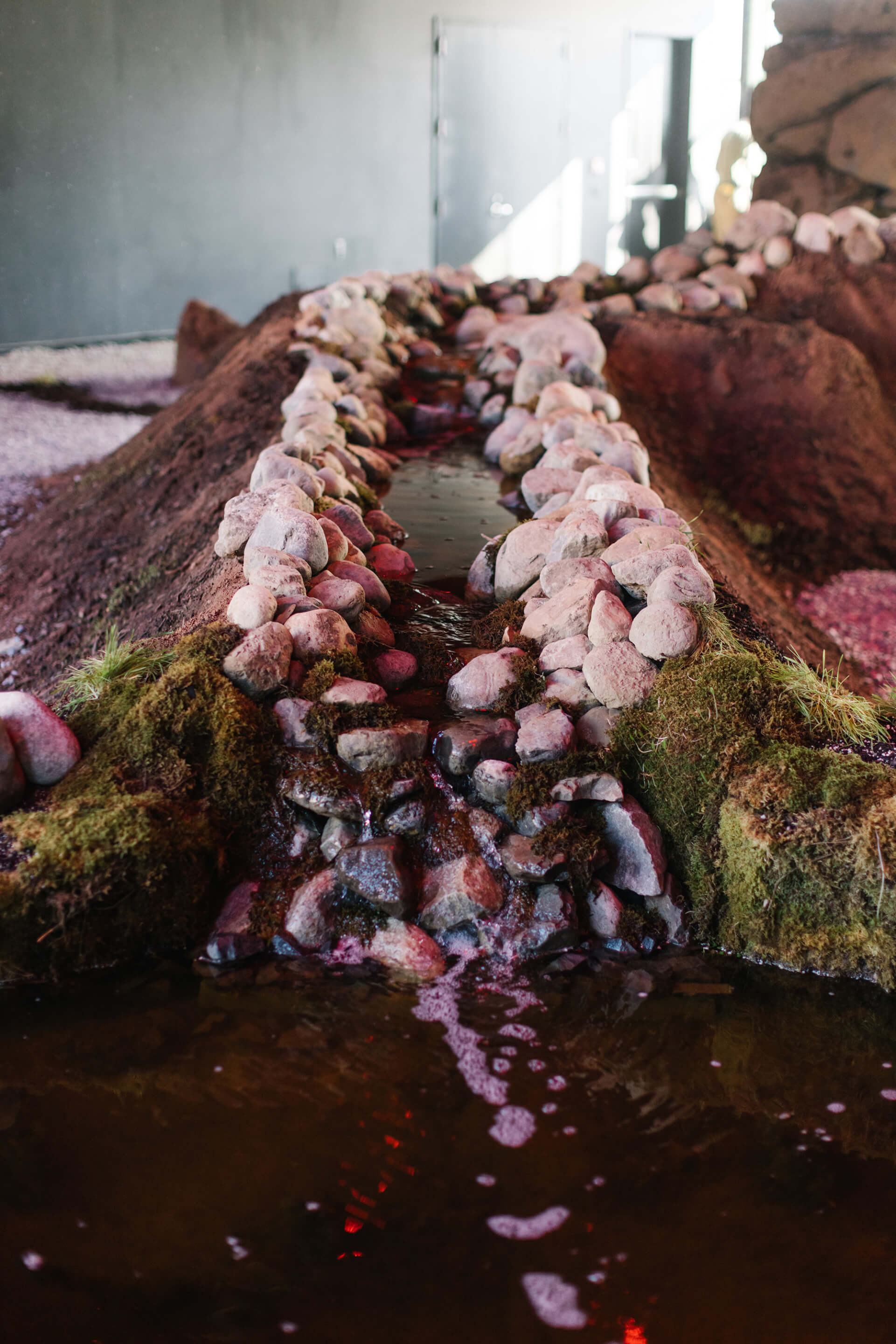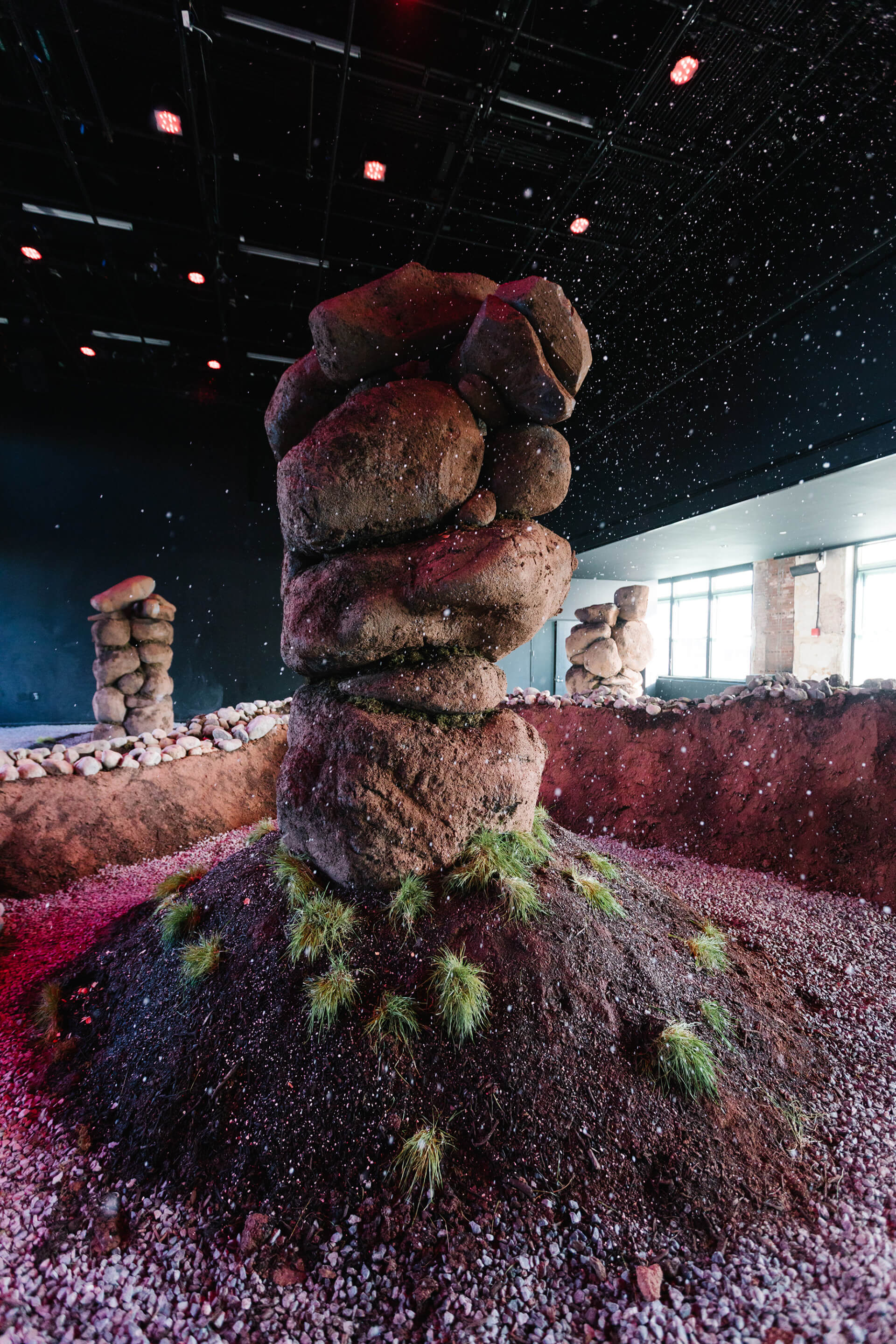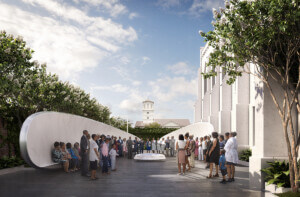Walking through the shredded plastic tarp that cuts between the hallway and Performance Space’s Keith Haring theater, one enters an all-encompassing, multisensory environment created by poet and artist Precious Okoyomon of (according to the caption) moss, gravel, soil, insects, wildflowers, anoles (small iguanian lizards), and kudzu ash. The latter is the detritus of a previous installation at the MMK Frankfurt, Earthseed (August through November 2020), where the kudzu vine was planted and subsequently proliferated throughout the soil-filled gallery, enveloping the figural sculptures the artist rendered from earth and wool. Kudzu is a vine native to Japan that the American government introduced to Mississippi’s ecosystem in 1876 to curb the widespread soil erosion brought about by the cotton industry. Similar to the intrinsic role chattel slavery played in America’s economic growth and legal infrastructure, kudzu became inexorably enmeshed with the South’s ecology, proliferating so quickly that its cultivation was later banned.
FRAGMENTED BODY PERCEPTIONS AS HIGHER VIBRATION FREQUENCIES TO GOD is the title of Okoyomon’s installation at Performance Space on Manhattan’s Lower East Side, a phrase excerpted from a poem they wrote in conjunction with the exhibition. The artist’s intent was to create “an ecosystem that seeks to hold grief,” a response to the mass death and devastation of the past year. Visitors are invited to consider the installation as a place to mourn; bench-height stones are scattered throughout the theater, and a trail of mulch weaves about boulders precariously stacked to form a monolithic henge. A central, sloped mound of algae and moss-topped soil encases a circulating water-pump system; water flows down the hillock into a small pool populated by a handful of fish, and a variety of small plants sprout from its banks.

The babbling of the stream is accompanied by an audio track played through the theater’s speakers, a heavily engineered dronelike composition intermittently offset by nonverbal phrases of human voices. The kudzu vines that blanketed Okoyomon’s earlier Earthseed installation (a name borrowed from the fictional religion described in Octavia Butler’s novels Parable of the Sower and Parable of the Talents) mentioned earlier have been rendered to ash. After the exhibition in Frankfurt closed, the artist incinerated the vine in a cathartic act of funerary cremation, embodying the cyclical, biological incarnation of life and death through which we are still traversing, and with which we may dwell in Okoyomon’s current environment.

“Like Blackness itself,” the pamphlet for the Earthseed exhibition read, “Kudzu is both indispensable to and irreconcilable with Western civilization.” In another of the booklet’s texts, writer and artist Hannah Black observed that “kudzu knows how to live homelessly,” growing “out of necessity rather than hope.” But the kudzu in the Performance Space installation isn’t alive; it has died, disintegrated, and traversed the Atlantic to rest atop the living organisms quietly thriving in a fourth-floor theater in the East Village, a space named for a victim of the last deadly pandemic whose horrors were largely wrought by the designed social and governmental negligence of an already-marginalized demographic. Thus, where the Frankfurt exhibition establishes an explicit analogy for the nature of Blackness, the current installation creates a space to consider the forced reincarnation inherent to its existence. Musing on the eternal transformation of the earth and of ourselves, Okoyomon implores us to not only comprehend our position in the ecosystem of our post-COVID world, but to examine the change occurring in ourselves as we live on, surrounded by the eternal—yet intrinsic—cycle of death and rebirth.
FRAGMENTED BODY PERCEPTIONS AS HIGHER VIBRATION FREQUENCIES TO GOD runs through May 9, 2021.











